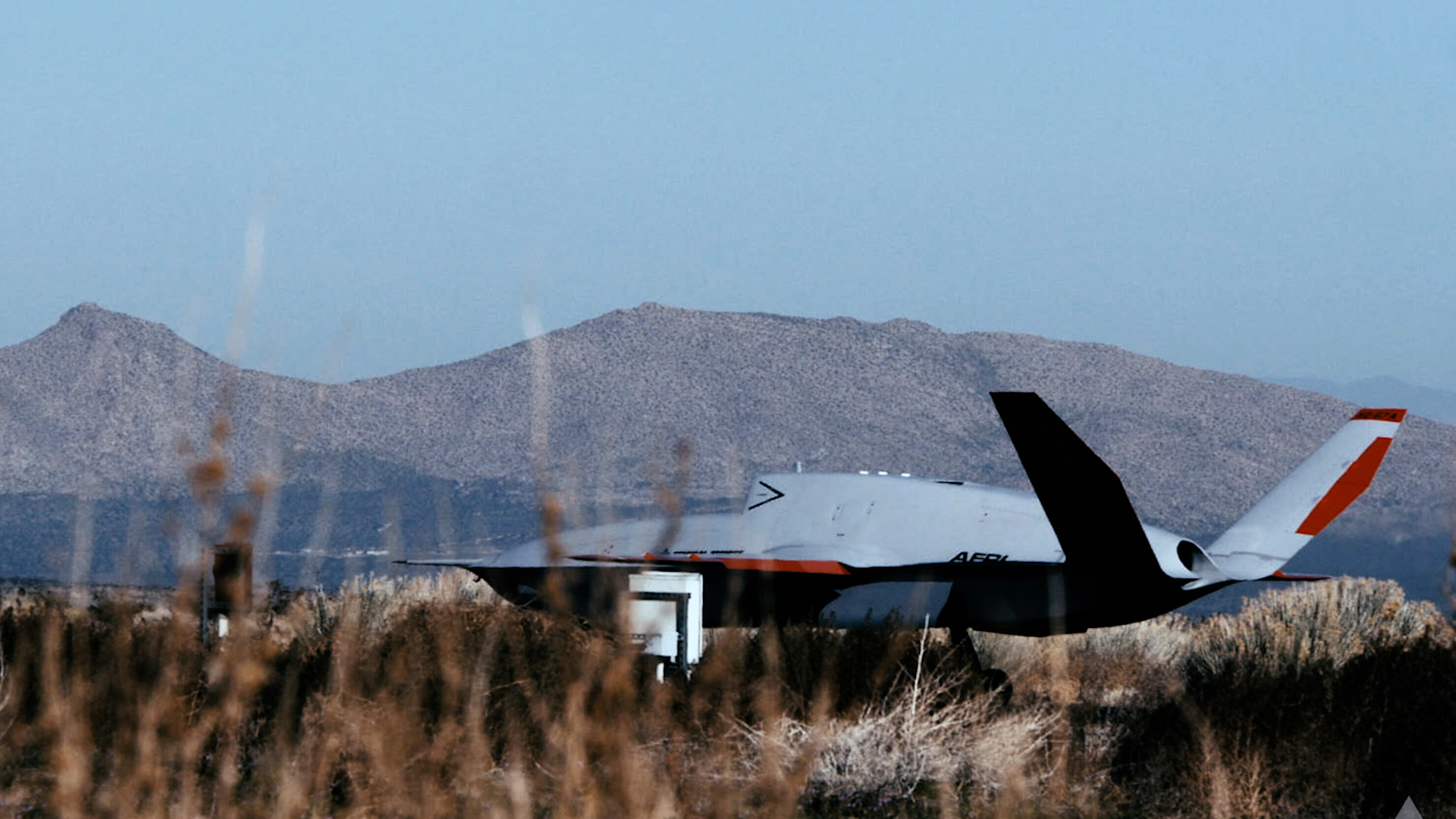AFRL releases video footage of XQ-67A first flight
WRIGHT-PATTERSON AIR FORCE BASE, Ohio (AFRL) – The Air Force Research Laboratory successfully flew the first of a second- generation of Autonomous Collaborative Platforms known as the XQ-67A demonstrator, built and flown in the Off-Board Sensing Station, or OBSS, program Feb. 28, 2024.
The AFRL OBSS program is the validation of a design, build and test process that has resulted in the XQ-67A. It is the first of its kind to be built on a common chassis or genus — much like that of a motor vehicle frame — and with its first successful flight, the XQ-67A is proof that the genus approach works. This enables a faster and more cost-effective replication of the aircraft.
This new approach also responds to the challenge of great power competition by speeding delivery of affordable, advanced capabilities to the warfighter. AFRL provides our nation and our warfighters with advanced technologies leading to reliable, effective and integrated capabilities for use today and tomorrow.

AFRL’s XQ-67A Off Board Sensing Station, or OBSS, designed and built by General Atomics, took its maiden flight Feb. 28 from Gray Butte Field Airport, Palmdale, California. XQ-67A completed several test points and safely recovered on the first of a series of flight tests. The XQ-67A is the first of a second generation of autonomous collaborative platforms, or ACP.(Courtesy photo)
Designed, built, ground tested and flown in just over two years, AFRL’s XQ-67A builds on the success of the XQ-58A Valkyrie and complements the Air Force Test Center’s X-62 VISTA and F-16 VENOM efforts to speed fielding of Collaborative Combat Aircraft, or CCA. AFRL flight testing actively pursues initiatives that allow AFRL to deliver science and technology at the speed of need through agile and continuous development.
The XQ-67A is remotely piloted but is capable of autonomous flight. Under AFRL’s Low Cost Attritable Aircraft Platform Sharing, or LCAAPS, program, the lab’s Aerospace Systems Directorate explored development of a chassis or “genus” as the foundational core architecture from which several “species” of aircraft can be built. This provides an alternate acquisition approach for ACP aircraft using a product line philosophy that enables faster development, lower costs and opportunities for frequent technology refreshes.
To view a video of the first test flight of the XQ-67A, which took place at the General Atomics Gray Butte Flight Operations Facility near Palmdale, California, visit: https://www.youtube.com/watch?v=0MCwYT6dS3Y
About AFRL
The Air Force Research Laboratory is the primary scientific research and development center for the Department of the Air Force. AFRL plays an integral role in leading the discovery, development, and integration of affordable warfighting technologies for our air, space and cyberspace force. With a workforce of more than 12,500 across nine technology areas and 40 other operations across the globe, AFRL provides a diverse portfolio of science and technology ranging from fundamental to advanced research and technology development. For more information, visit: www.afresearchlab.com.


